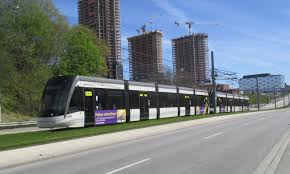
Introduction
The Eglinton Crosstown Light Rail Transit (LRT) project in Toronto is set to transform public transportation in the city significantly. This project has been a topic of much discussion due to its scale, scope, and the potential changes it brings to the city’s transit infrastructure. As one of the most ambitious transit developments in Canada’s history, the Eglinton Crosstown LRT aims to ease congestion and provide a reliable transit option for thousands of commuters.
Project Overview
Initially announced in 2007 and intended for completion by 2020, the Eglinton Crosstown LRT project spans approximately 19 kilometers along Eglinton Avenue, connecting the Weston area in the west to Kennedy Station in the east. The light rail line is designed to have 25 stations and stops, significantly increasing accessibility throughout the corridor. Despite facing several delays due to various challenges, including construction issues and the COVID-19 pandemic, the line’s completion is now scheduled for late 2023, with many anticipating its full operation by early 2024.
Current Status and Developments
As of October 2023, progress on the Eglinton Crosstown LRT is evident, with construction nearing its final stages. Recent reports indicate that track installation and station finishing work are ongoing. The project contractor, Crosslinx Transit Solutions, has committed to advancing the completion timeline, emphasizing safety protocols and minimizing disruptions to the surrounding areas. Testing of the trains is expected to commence soon, as officials prepare for the long-awaited launch of service.
Importance for Toronto
The Eglinton Crosstown LRT is not just a transit project; it represents a crucial investment in Toronto’s infrastructure aimed at supporting the city’s growing population. With the city projected to add over a million residents by 2041, efficient public transit options are essential. The line promises to significantly reduce commute times, enhance air quality by offering a greener transit alternative, and stimulate economic growth by improving access to businesses and services along the route.
Conclusion
As Toronto’s transit landscape continues to evolve, the successful implementation of the Eglinton Crosstown LRT will have far-reaching implications for the city’s future. It is expected to alleviate congestion on several major transit routes, connect communities, and foster economic opportunities. While challenges remain, the completion of this transit line will mark a significant milestone for Toronto as it seeks to create a sustainable and efficient public transportation network.



